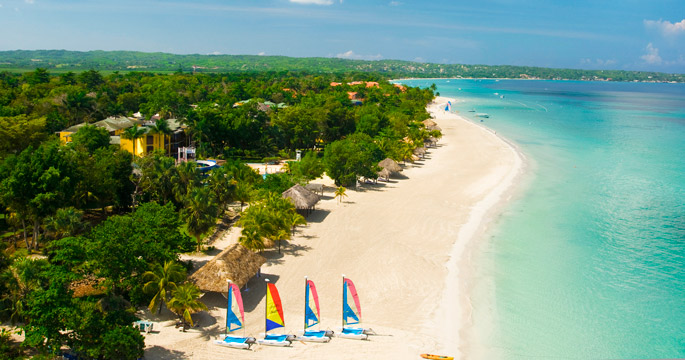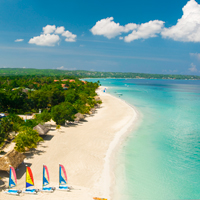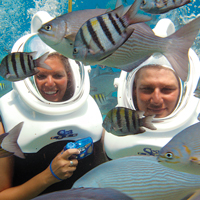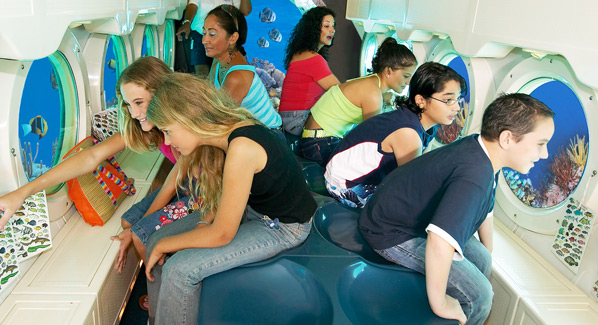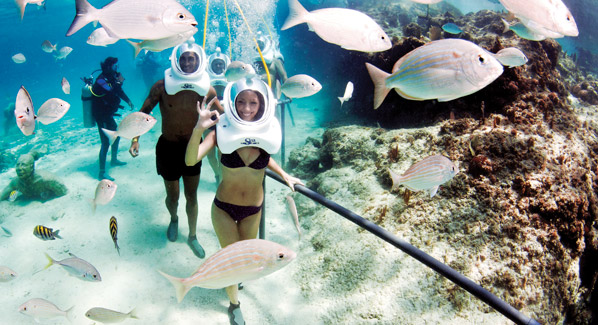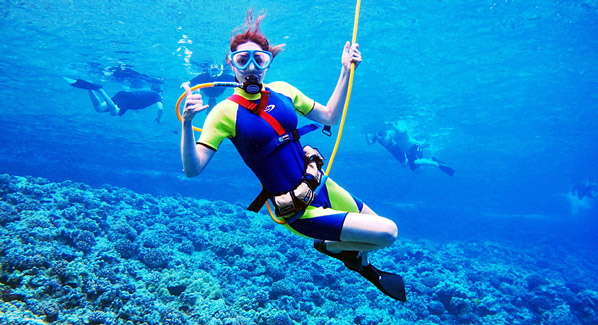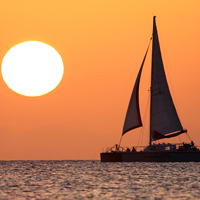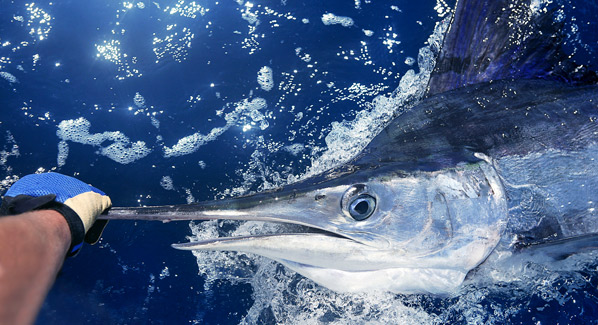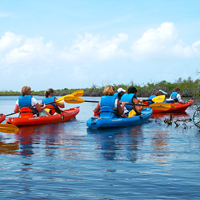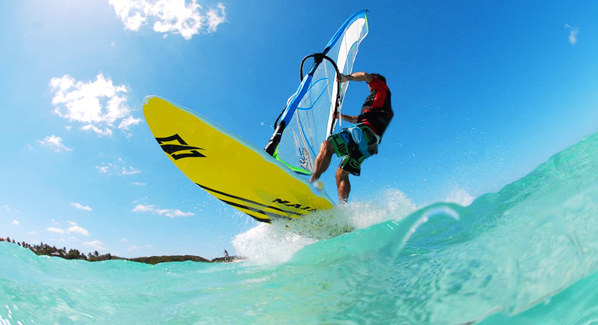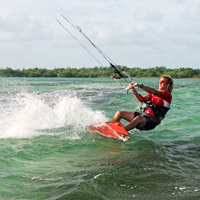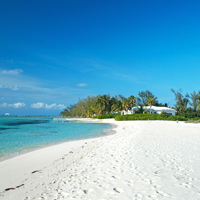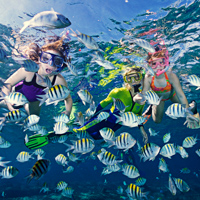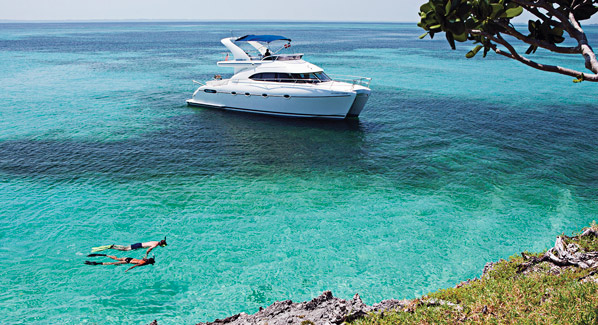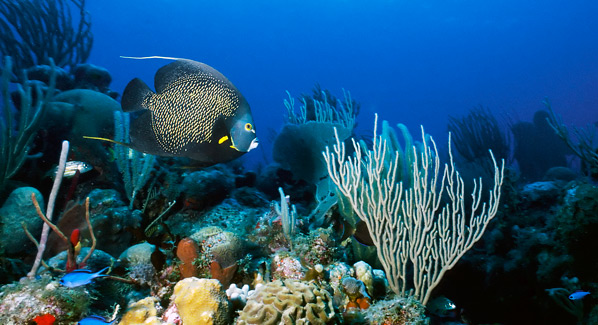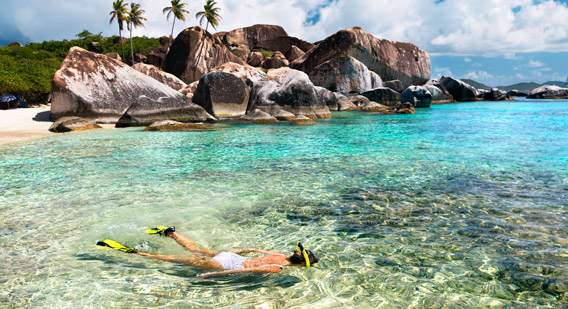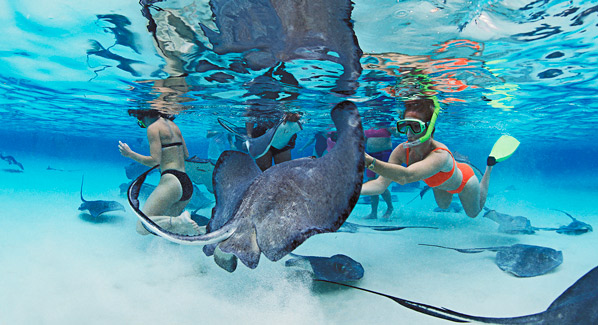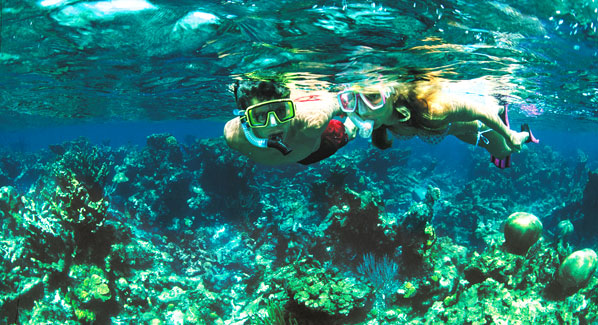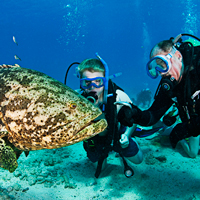One of the great joys of snorkeling tropical waters is freedom. No complex or heavy dive gear to manage, no worries about running out of air or monitoring bottom time, just the tranquility of hovering over a sun-dapple reef. It’s even better when done on your own schedule by wading right out from a resort beach, with no boat to catch and a refreshing shower and beach chair awaiting your return. Here are some of the best beachfront resorts in the Caribbean that provide immediate access to great snorkeling.
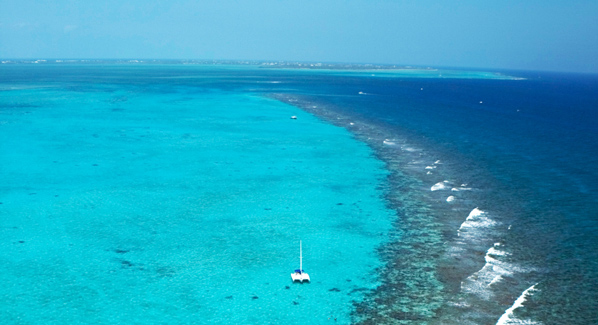
Aerial view of Grand Cayman’s northern barrier reef. The outside is safe for snorkeling only in calm seas; the sheltered inner side offers more consistent conditions. Photo: Cayman Island Tourism
The Retreat at Rum Point, Grand Cayman
It’s less than eight miles from Grand Cayman’s Seven Mile Beach to Rum Point as the crow flies, but you’ll have to drive all the way around on the island’s coastal highway or take a ferry across North Sound to get there. This relative isolation means fewer swimmers on the palm-fringed beach and a chance to explore the coral-strewn shallows inside the island’s northern barrier reef. The resort is a collection of rental condominiums that provide spectacular water views. Full kitchens save on dining out, but if the adjacent Wreck Bar saps the cook’s culinary ambitions, then head next door to the Rum Point Club for a meal.
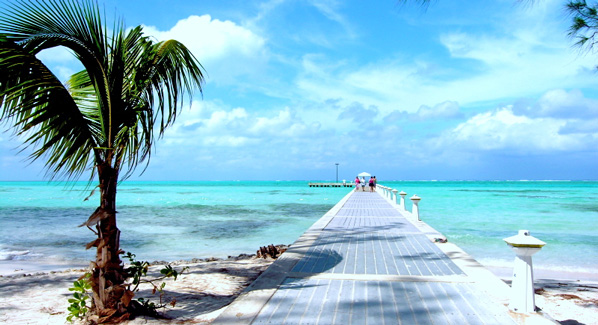
The Retreat at Rum Point sits along 1,200 feet of white sand beach where you might enjoy a beachside massage or a nap in a hammock under the shade. Photo: Rum Point
Fantasy Island Beach Resort, Roatan
The island of Roatan is ringed by magnificent coral reefs. But getting to many of these sites will require a boat ride. The best place to begin a snorkel from shore is at the Fantasy Island Beach Resort. Beginning just to the east of the resort beach is French Key Reef, which is an area of sheltered and protected coral reefs that rise close to the surface. A couple of minutes of finning across the sand bottom brings you to coral gardens filled with an abundance of tropical fish. As an alternative to swimming, resort guests can opt for a guided boat trip. Fantasy Island is a mid-sized resort set on a small private island just off Roatan’s southern shore in the popular Coxen Hole area. All-inclusive packages are available, and the resort is popular with divers and watersports enthusiasts.
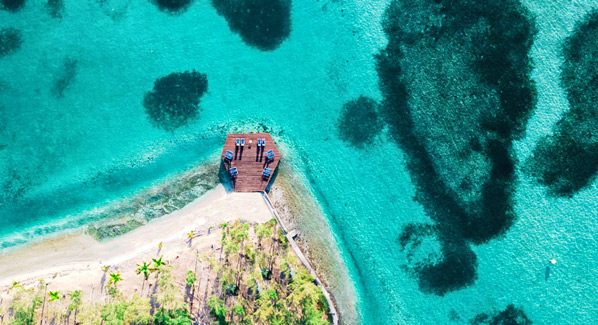
This dock at the western edge of the Fantasy Island beach is the ideal starting point for a snorkeling exploration of the sheltered lagoon surrounding French Cay Reef. Photo: Fantasy Island
Tranquility Bay Resort, Belize
Situated on a remote beach on Ambergris Caye, 10 miles north of San Pedro and accessible only by boat, Tranquility Bay is a throwback in time. Traditional, colorful cottages are positioned just yards from the water, and inside you’ll find a surprisingly modern décor and amenities. From the beach it’s a short swim to the inner edge of Belize’s magnificent barrier reef. The resort is secluded and simple, but if clean sand and clear water trump nightlife and spa services, there are few places that can compare.
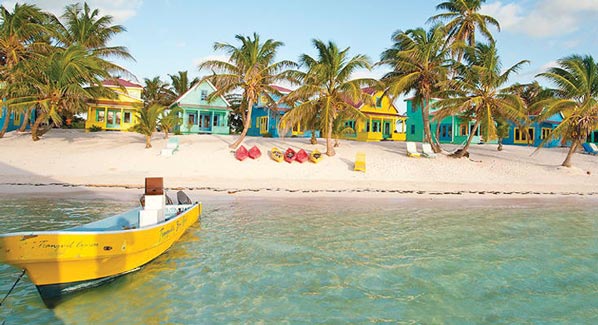
Tranquility Bay is the ideal spot to unplug, relax and explore nature. In addition to underwater activities, there are Mayan sites to explore on the mainland. Photo: Tranquility Bay
The Buccaneer Hotel, St. Croix
This landmark property delivers enticing views of the coral-strewn shallows that sit between Mermaid Beach and blue water. Fin east along the rocky coast towards Shoy Point and look under the ledges to discover fish and lobster lurking in the shadows. Those wanting more can catch a boat from the resort dock to Buck Island. Ashore, the Buccaneer remains one of St. Croix’s favorite resorts, providing a complete vacation experience that can include golf, tennis, spa treatments and live music.
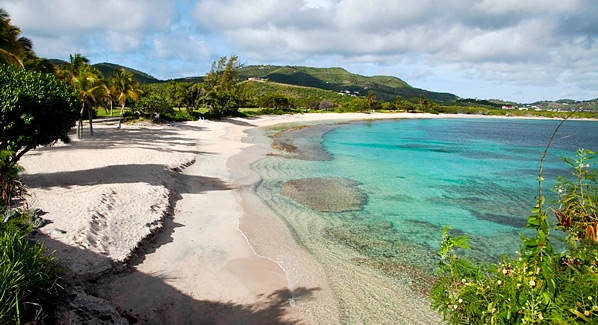
A short swim from the beach at St. Croix’s Buccaneer resort leads snorkelers to a series of coral-covered rock ledges that attract a variety of tropical fish. Photo: The Buccaneer Hotel
Fiesta Americana, Cozumel
Fish and coral are abundant off Cozumel’s west coast, but many sites lack easy beach entries, and to the north of the island, prevailing currents may pull snorkelers away from land. For an easier snorkeling experience, head south to the Fiesta Americana. This all-inclusive property overlooks a colorful stretch of shallow reef just to the north of Chankanaab National Park. There are easy entry and exit points for snorkelers, and milder currents move you southward towards the park. This upscale all-inclusive property is family-friendly, with a pair of pools, a playground and children’s activities.
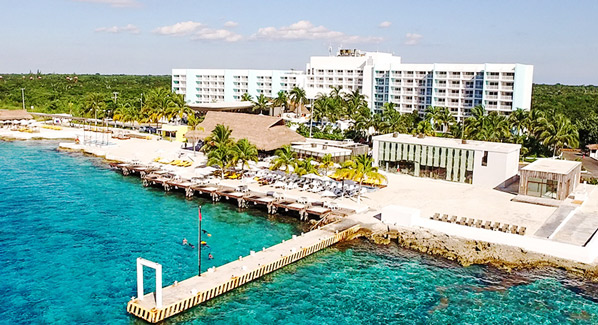
In addition to the awesome snorkeling at the Fiesta Americana, there’s a private beach with plenty of beach lounges, umbrellas, over-the-water beds, and hammocks. Photo: Fiesta Americana
Anse Chastanet Resort, St. Lucia
Some of the best coral reefs lie off the southwest coast of St. Lucia in the shadow of the landmark Pitons. They are within an easy swim from the beach at the Anse Chastanet Resort. This protected coral habitat is a favorite with divers and snorkelers, who can wade into the shallows to discover a profusion of sea life mere yards from shore. The resort provides snorkeling equipment for self-guided explorations, or you can book a boat trip with a guide to nearby reefs. The resort itself is the stuff of tropical fantasy, with rooms hiding in the palms, and a short climb up the green hill delivers sweeping views of the Caribbean.
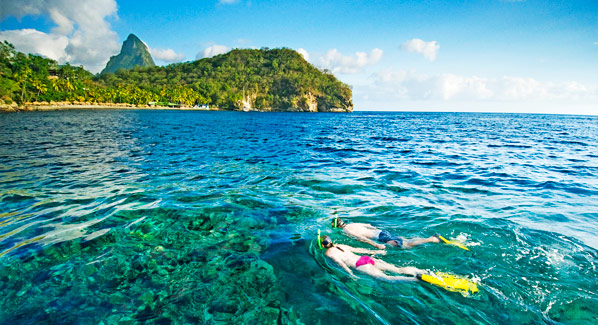
The beach at Anse Chastanet provides wade-in access to the island’s finest coral reef, which begins in shallow water just 15 yards from shore. Photo: Anse Chastanet Resort, St. Lucia
Plaza Resort, Bonaire
Bonaire’s entire west coast is flanked by one of the finest coastal reef structures in the Caribbean. But only a handful of the island’s resorts are also favored by sandy beaches. Of these, the Plaza provides the best combination of amenities and water access. The reef is just a short swim from the water’s edge, and an on-site dive shop has rental gear or replacement equipment. Ashore, the all-inclusive resort features a collection of low-rise buildings overlooking the channels of a lagoon and marina. Highlights of a stay include open-air seating at the waterfront restaurant and a weekly beach barbecue that is a favorite island tradition.
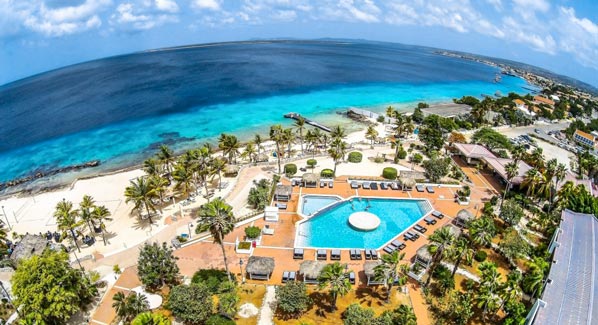
At Plaza Bonaire, a walk to the beach from your room invites snorkeling on a whim or the dive shop organizes snorkeling trips around the island. Photo: Plaza Beach
Sunscape Curacao Resort, Curacao
Six restaurants, six bars, water sports, a spa, first-class fitness center, daily entertainment and a casino—all for one price. Well, not the casino. But if larger all-inclusive resorts are your thing, the Sunscape is the finest on Curacao. When it’s time to submerge, novices can find fish without having to venture beyond the sheltering breakwater. More advanced snorkelers can head outside the breakwater to find vibrant patches of coral on a reef that drops from the jetty rocks to depths of 10 feet, then continues a gradual slope out toward deep water.
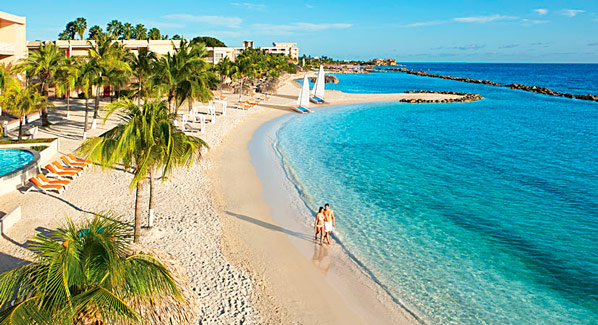
From the beach at Sunscape Curacao Resort, novice snorkelers will enjoy calm conditions inside the rock jetty, while the more accomplished can explore the outer slope. Photo: Sunscape Curacao

